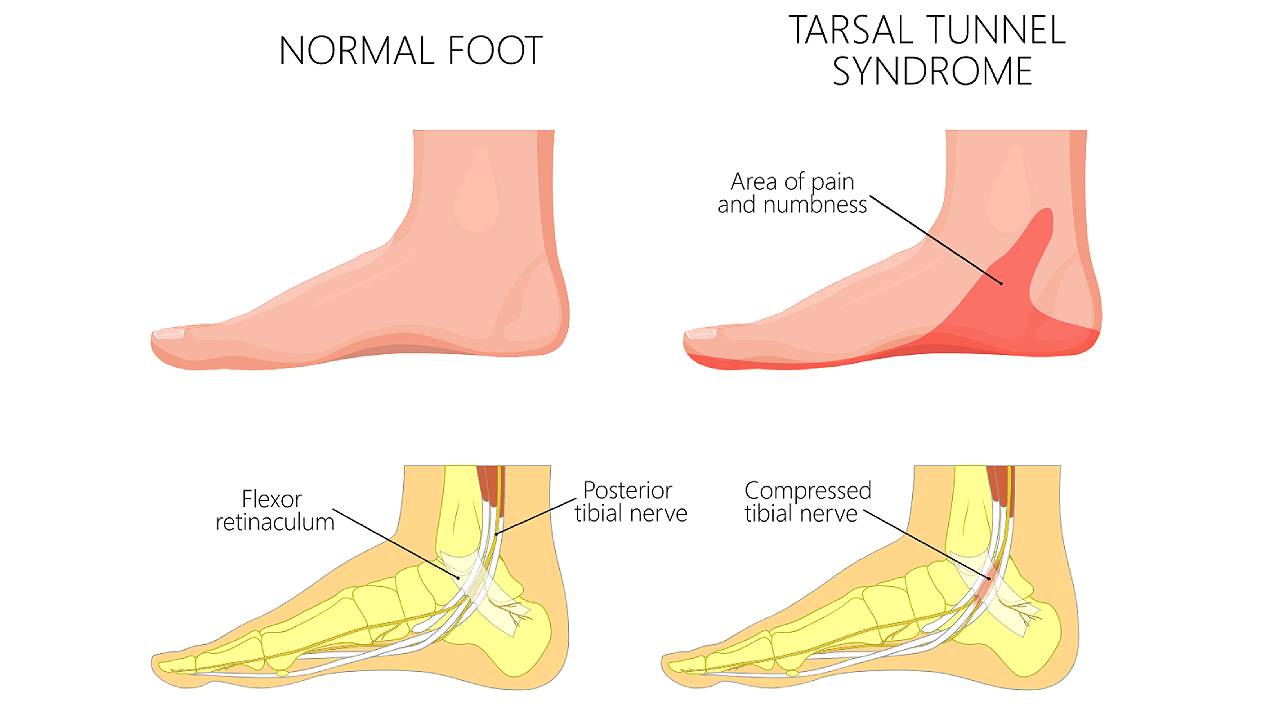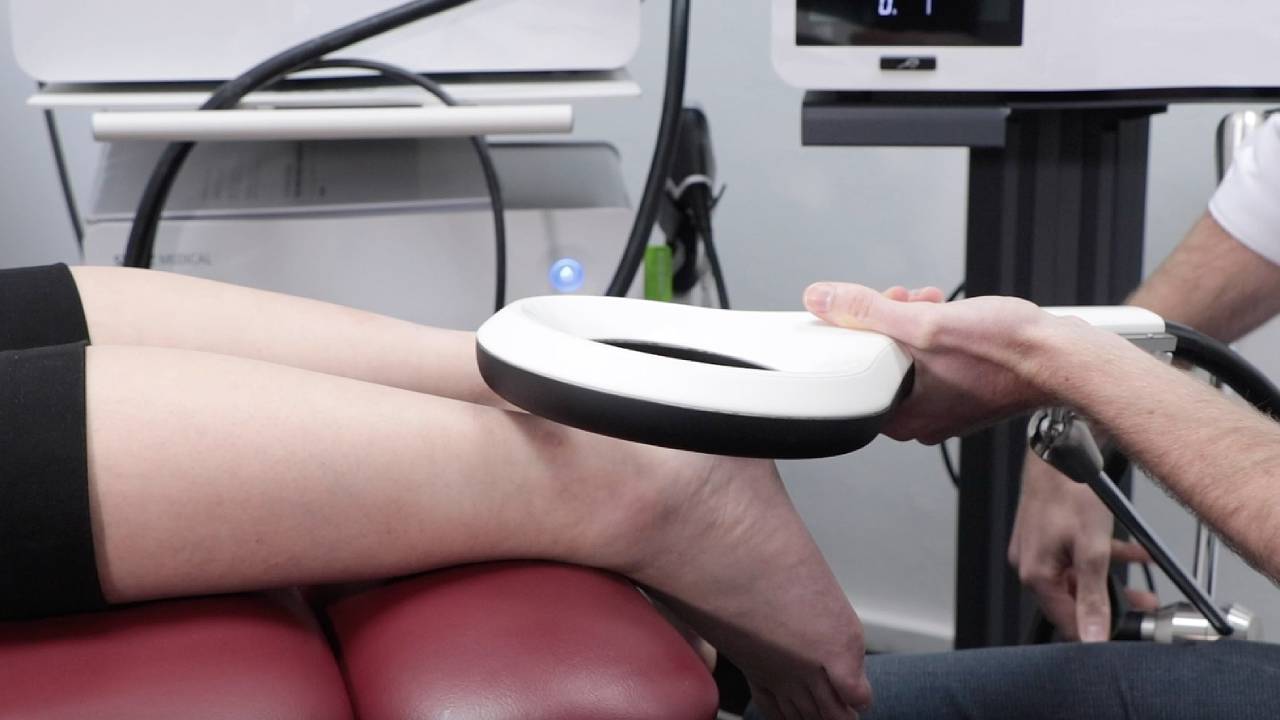Tarsal tunnel syndrome is a form of nerve entrapment in the ankle that occurs when excessive pressure is placed on the posterior tibial nerve as it passes through a passage called the tarsal tunnel. This causes the nerve to compress, leading to pain and/or other symptoms.
Some causes of nerve compression include:
- Inflammation of the surrounding tissues
- Crush/stretch injuries
- Fractures
- Ankle dislocations or severe sprains
- Growths such as ganglion cysts
- Systemic conditions such as diabetes and arthritis

Common Signs & Symptoms of tarsal tunnel syndrome:
- Radiating pain in the arch and heel of the foot, and occasionally the toes
- Burning or tingling sensation similar to pins and needles
- Numbness or reduced feeling in the foot
- Worsened pain when running or standing for long periods
- Pain can be more intense at night
- Sudden onset of pain that is often brought on by activity
This condition is found to affect patients over the age of 20 and is directly associated with flat foot or foot hypermobility. Patients with tarsal tunnel syndrome are at a greater risk of their feet rolling inwards, causing the condition to be easily aggravated by movements like standing, walking, or running, resulting in further compression of the nerve.
Pain that initially presents in one foot can also occur in the other foot as the person tries to alter their weight distribution to minimise existing pain. Individuals who have made sudden changes to their daily activities or who are predisposed to foot and ankle malalignment may find the onset and development of tarsal tunnel syndrome to occur over a very short period of time.
Tarsal Tunnel Syndrome is often mistaken for plantar fasciitis as both conditions occur in the same region of the foot. However, tarsal tunnel syndrome is different as it also presents with neurological symptoms such as numbness or tingling, that extends to the heel, toes, or arch, while plantar fasciitis pain and tenderness are located primarily near the heel.

Types of Approaches
A podiatrist will conduct a thorough assessment of your foot and ankle to accurately ascertain the condition. Clinical imaging along with a hands-on assessment ensures an accurate diagnosis is made, allowing the podiatrist to develop a suitable plan for your needs.
Podiatrists utilise non-invasive methods, such as Electromagnetic Transduction Therapy (EMTT) and Super Inductive System (SIS) to reduce pain and symptoms associated with nerve irritation and long-term damage such as scarring. Modalities such as customised orthotics or ankle-foot orthotics can be used to offload certain areas of your foot, reducing overpronation, and increasing stability to reduce nerve compression.
Patients who have had multiple ankle sprains are at risk for developing tarsal tunnel syndrome. This is a condition that occurs when the nerve that runs through the ankle is compressed, causing pain, numbness, and weakness in the foot. If left unaddressed, tarsal tunnel syndrome can lead to permanent nerve damage. It is recommended to exhaust all conservative options before considering surgery.




